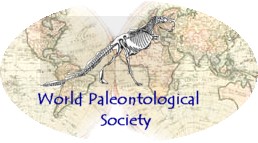
...vertebrates have vertebrae!



Cidastes sp.
Teeth & vertebrae
Late Cretaceous
Campanian


Cretaceous Room
 |
|||||||||||||||||||||||||||||||||
| Cretaceous Marine Vertebrates ...vertebrates have vertebrae! |
|||||||||||||||||||||||||||||||||
| Cretaceous seas were home of many large reptilian vertebrates including Mosasaurs and Ichthyosaurs. Both these groups are extinct. In the same seas, however, were the Chondrichthyes, the sharks, who resemble their modern relatives. | |||||||||||||||||||||||||||||||||
 |
|||||||||||||||||||||||||||||||||
 |
|||||||||||||||||||||||||||||||||
| Mosasaur teeth are conical with light vertical striations. Like most predator teeth, they lack serrations.. | |||||||||||||||||||||||||||||||||
 |
|||||||||||||||||||||||||||||||||
| Mosasaur Cidastes sp. Teeth & vertebrae Late Cretaceous Campanian |
|||||||||||||||||||||||||||||||||
| Mosasaur vertebrae are strongly procoelus, concave in front and convex behind. Mosasaurs are of the order 'squamata'...the same order as lizzards and snakes. | |||||||||||||||||||||||||||||||||
 |
|||||||||||||||||||||||||||||||||
| Ichthyosaurs had a long reign throughout the Mesozoic. 'Dolphin-like' in appearance the Ichthyosaurs were air breathing reptiles. Vertebral centra are concave on both sides and have a characteristic 'hourglass' shape in cross section. | |||||||||||||||||||||||||||||||||
 |
|||||||||||||||||||||||||||||||||
| Shark vertebrae. Sharks lack true bones...therefore few body parts other than teeth survive fossilization. Under right conditions, however, vertebrae contain enough hard mineral to be preserved. Vertebrae usually are 'round' and exhibit concentric rings in the interior. | |||||||||||||||||||||||||||||||||
| click for Cretaceous shark teeth | |||||||||||||||||||||||||||||||||
| Return to the Cretaceous Room |
|||||||||||||||||||||||||||||||||